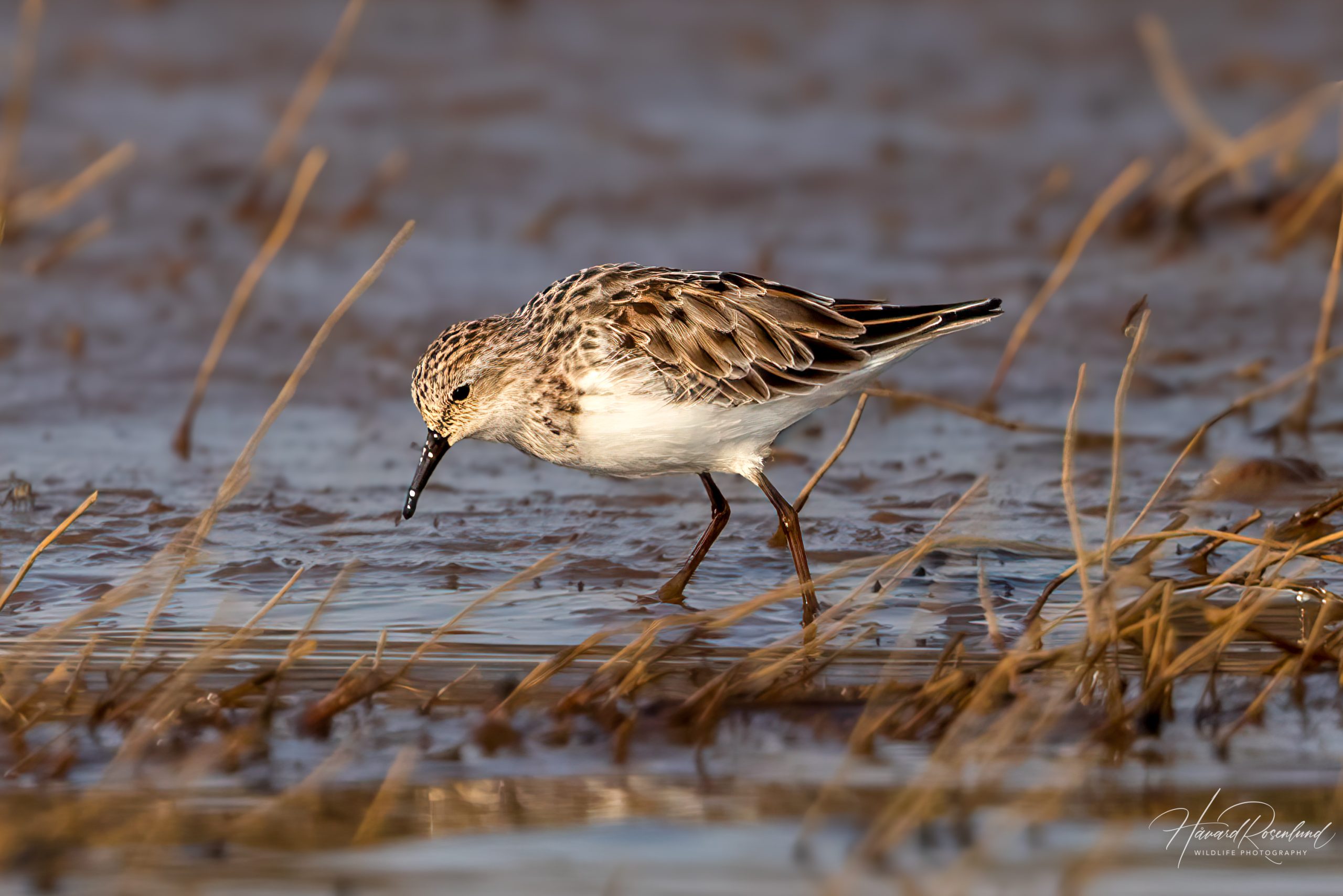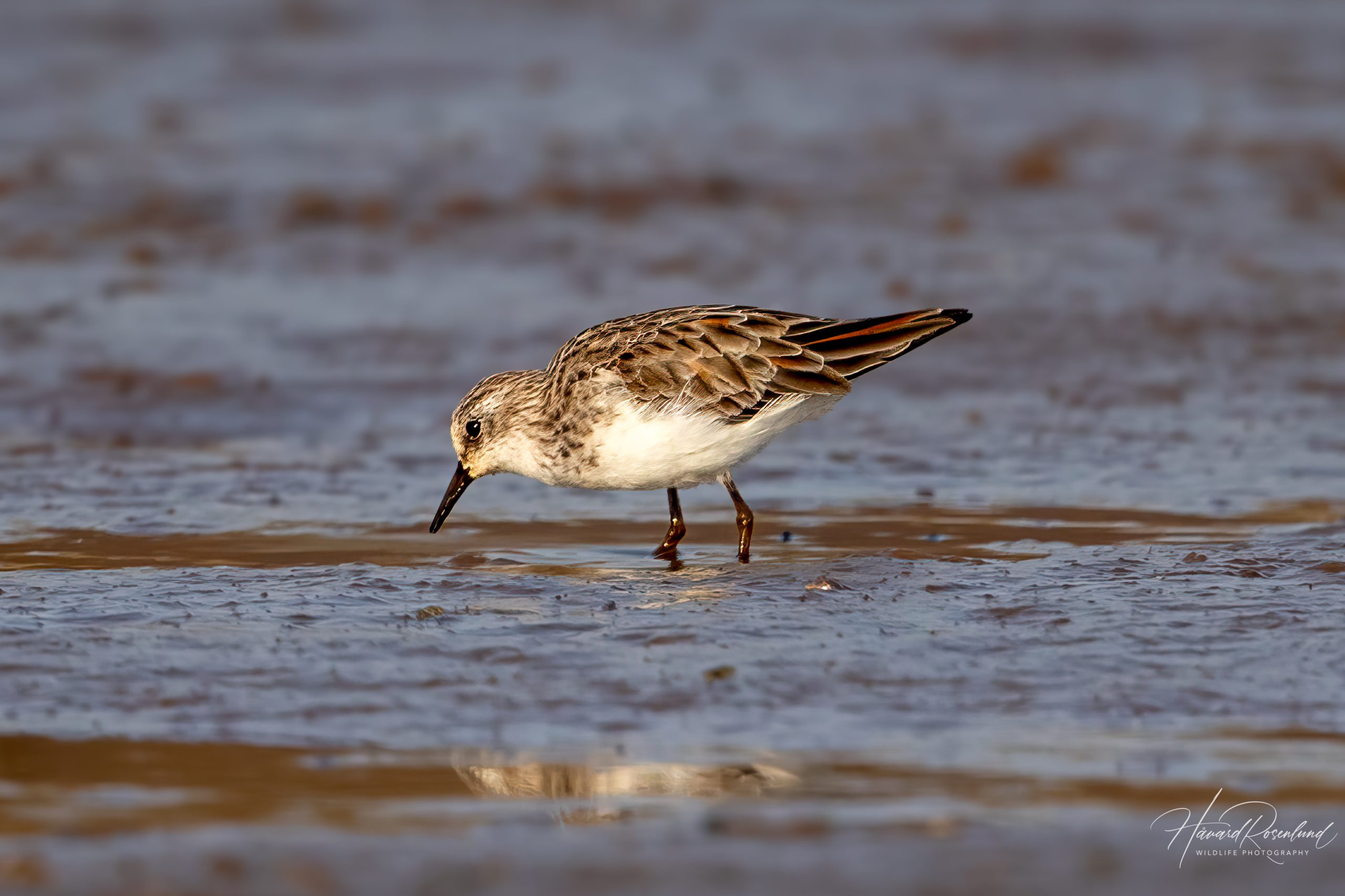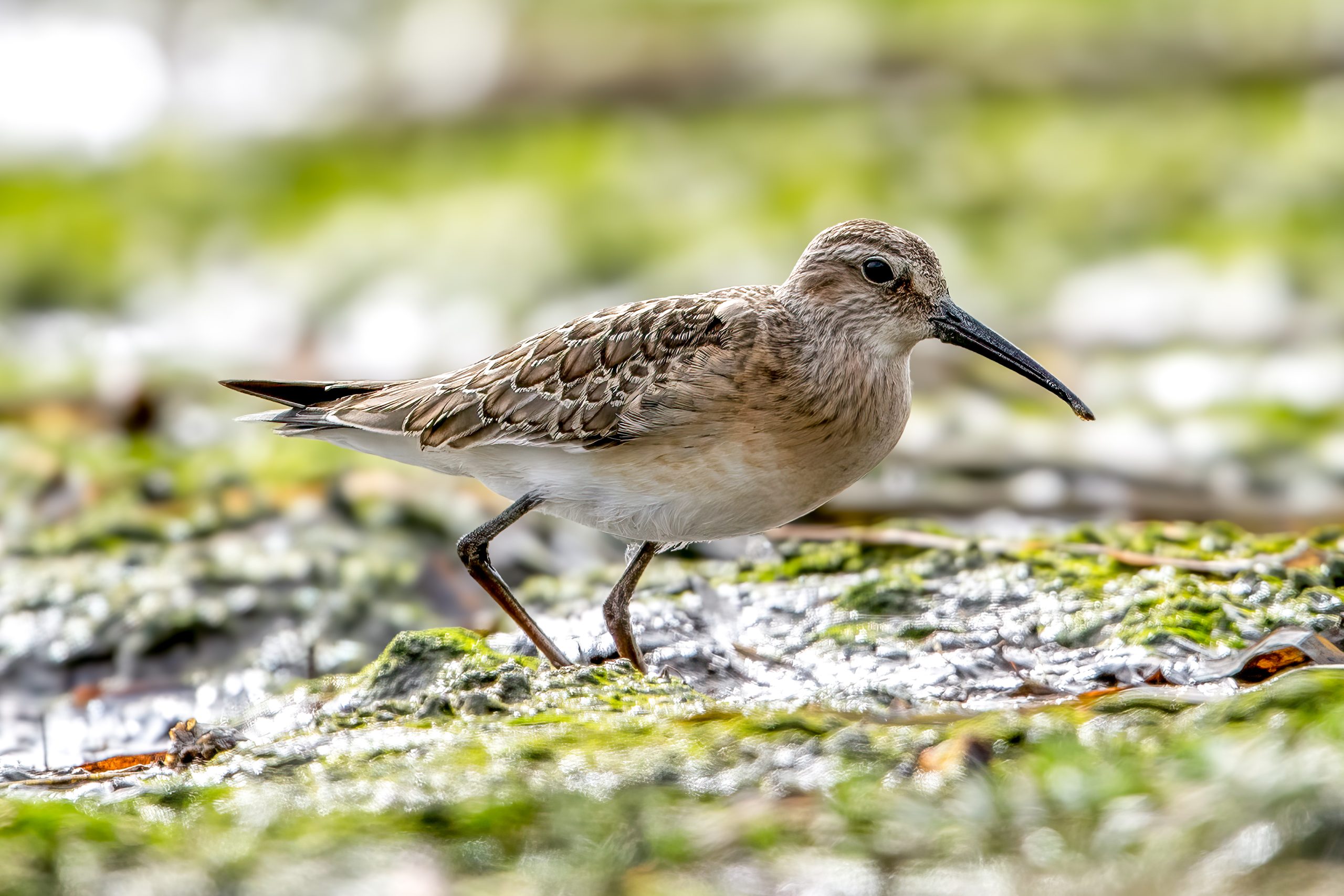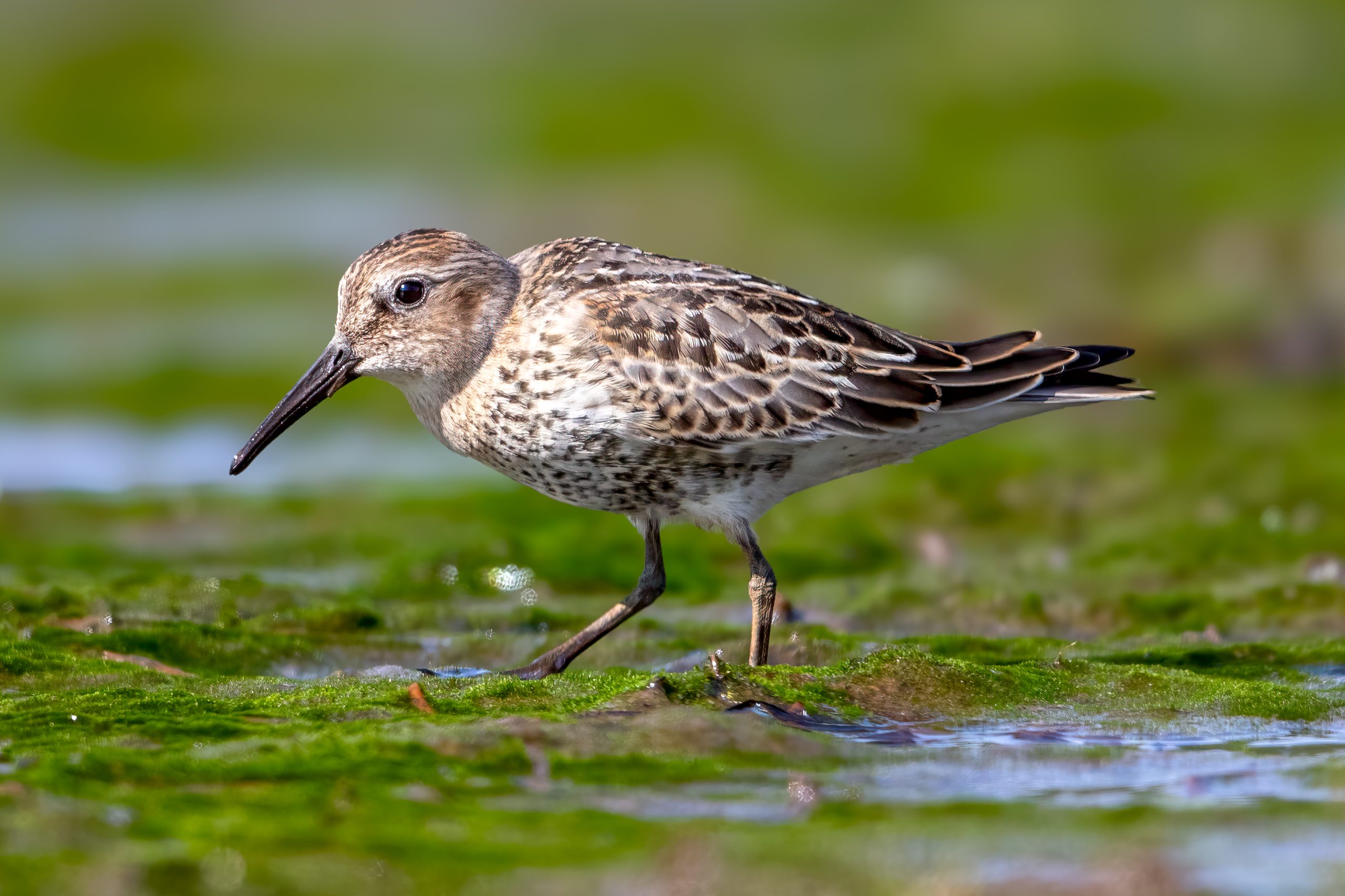Description
The little stint (Calidris minuta) is a small, delicate wader with a wide range across the Palearctic region, from the Arctic tundra of northern Europe and Asia where it breeds, to the coasts and inland wetlands of Africa, India, and Southeast Asia where it winters. Measuring approximately 12 to 14 cm (4.7-5.5 in) in length, with a wingspan of 28 to 31 cm (11-12 in), and weighing between 17 to 44 grams (0.60-1.55 oz), it is one of the smallest shorebirds. The little stint displays a combination of warm brown and grey plumage during the non-breeding season, while in the breeding season, it adopts a more striking appearance with a rich rufous hue on its back and crown. The bird has a short, straight, black bill and dark legs.
This species is similar to the slightly larger Temminck’s stint (Calidris temminckii), but it can be differentiated by its smaller size and the more contrasting colors during the breeding season. Another distinguishing feature is its more pronounced white throat, setting it apart from similar species.
Diet & habitat
Little stints are typically found in shallow wetlands, such as marshes, river deltas, and coastal lagoons. They prefer areas with muddy shores where they can easily probe the soft substrate for food. Their diet primarily consists of small invertebrates, including insects, crustaceans, and mollusks, which they pick from the mud or water’s surface using their sharp, slender bills.
This bird exhibits a characteristic feeding behavior, where it rapidly pecks at the ground in a repetitive motion, giving the impression of a sewing machine. It often feeds in flocks, sometimes mixed with other small waders, which provides additional protection against predators.
Migration
The little stint is a long-distance migratory bird, with one of the most extensive migratory routes among small waders. Breeding in the Arctic tundra, these birds begin their southward migration as early as July, traveling to wintering grounds in sub-Saharan Africa, India, and Southeast Asia. Some populations cover distances of up to 10,000 kilometers.
During migration, they utilize a variety of stopover sites, including estuaries and wetlands, where they rest and refuel before continuing their journey. The return migration to their breeding grounds occurs between April and May, timed perfectly to coincide with the thawing of the tundra.
Nesting
The breeding season for the little stint begins in June, coinciding with the short Arctic summer. They are ground-nesters, typically selecting a site on dry, open tundra with sparse vegetation. The female lays a clutch of four eggs, which are well-camouflaged against the ground, making them difficult for predators to spot.
Both parents take turns incubating the eggs, a process that lasts around 21 to 24 days. Once hatched, the chicks are precocial, meaning they are born with downy feathers and are able to leave the nest and feed themselves within a few hours. Fledging occurs approximately 18 to 20 days after hatching, though the young may remain with their parents for a short period after fledging as they learn to forage effectively.
Status
The little stint is currently listed as least concern on the IUCN Red List, indicating that it is not at immediate risk of extinction. However, like many migratory birds, it faces threats from habitat loss, particularly in its wintering and stopover sites. Wetland drainage, pollution, and climate change pose significant risks to the habitats that these birds depend on throughout their migratory cycle.








